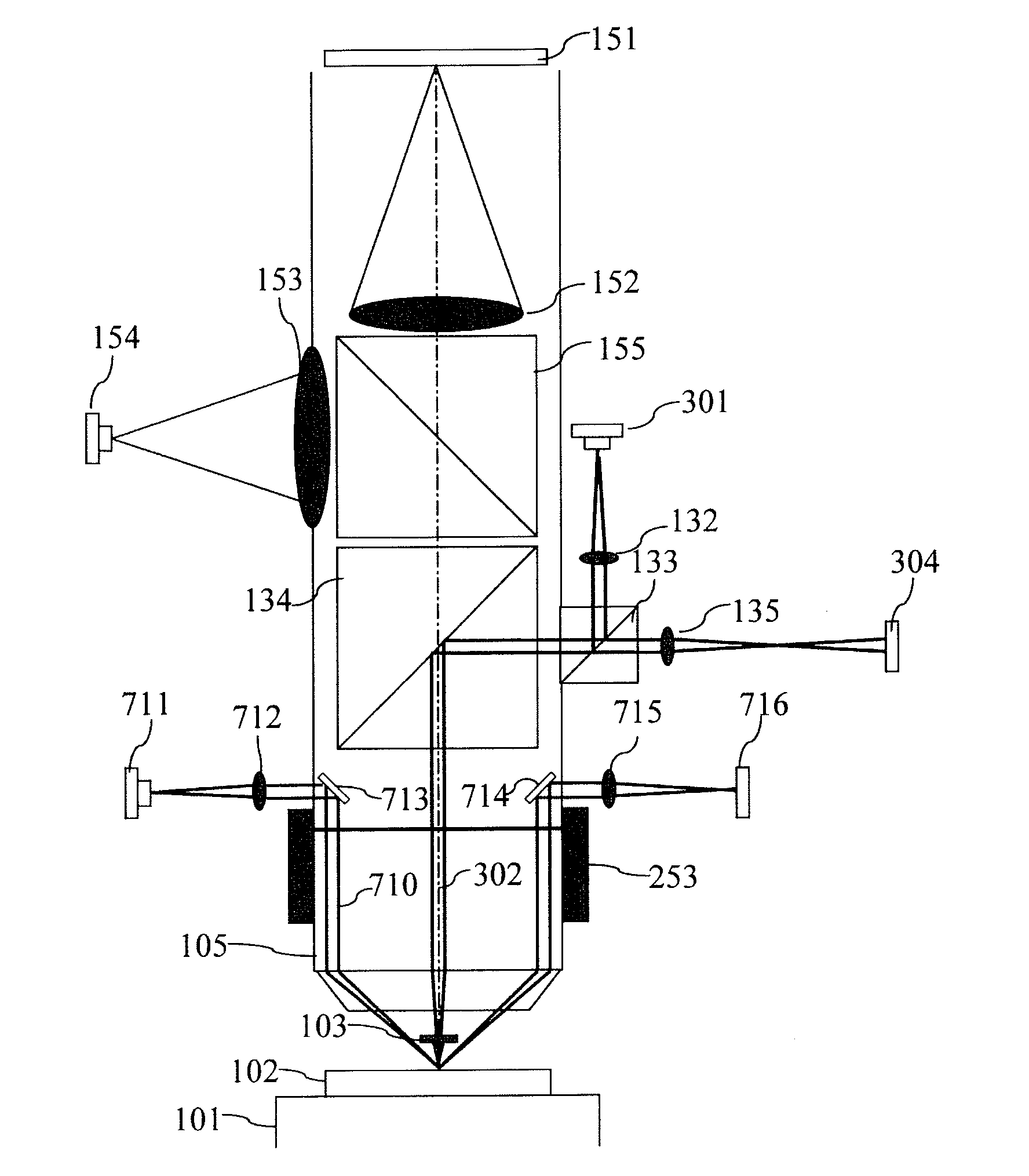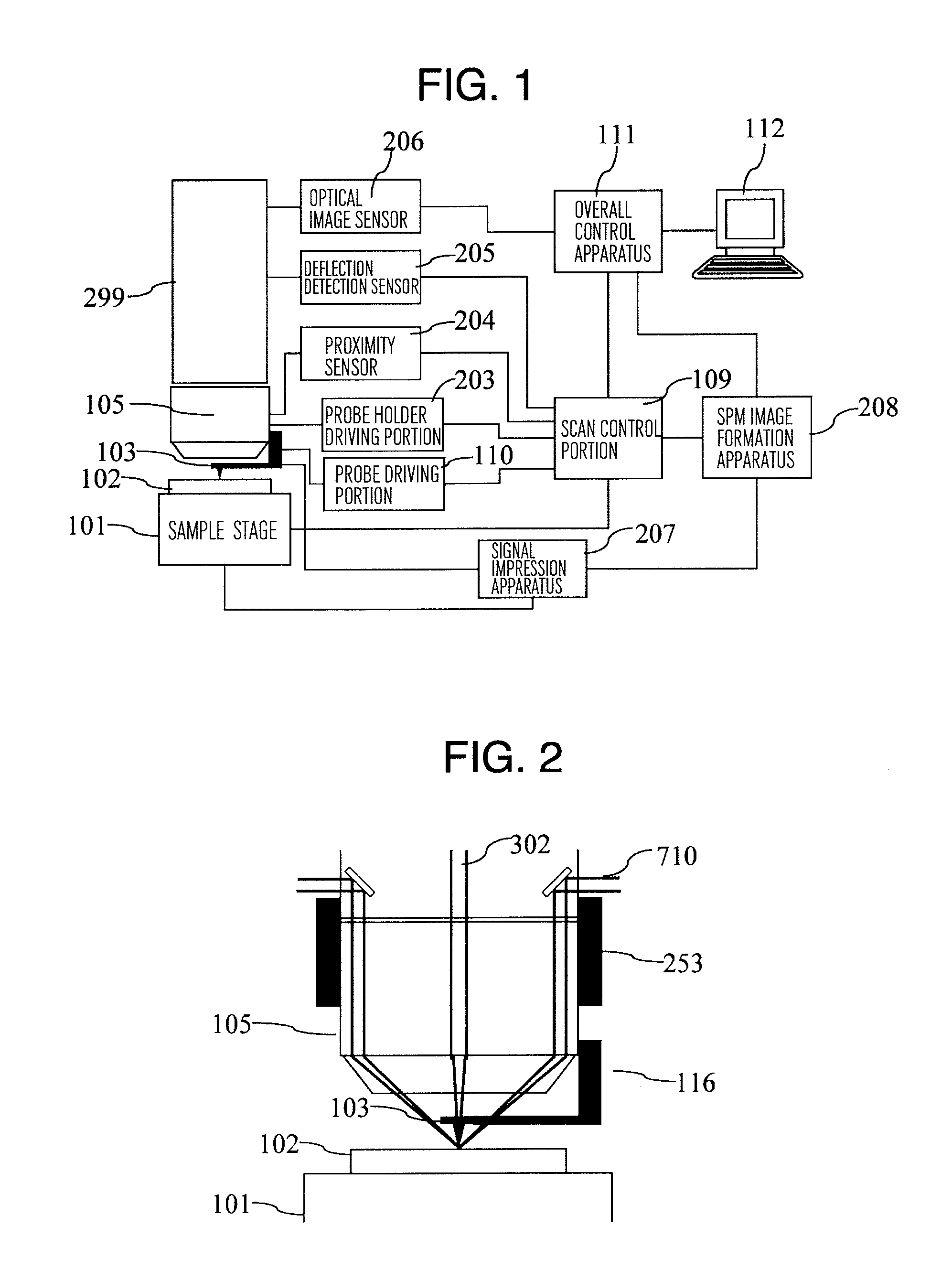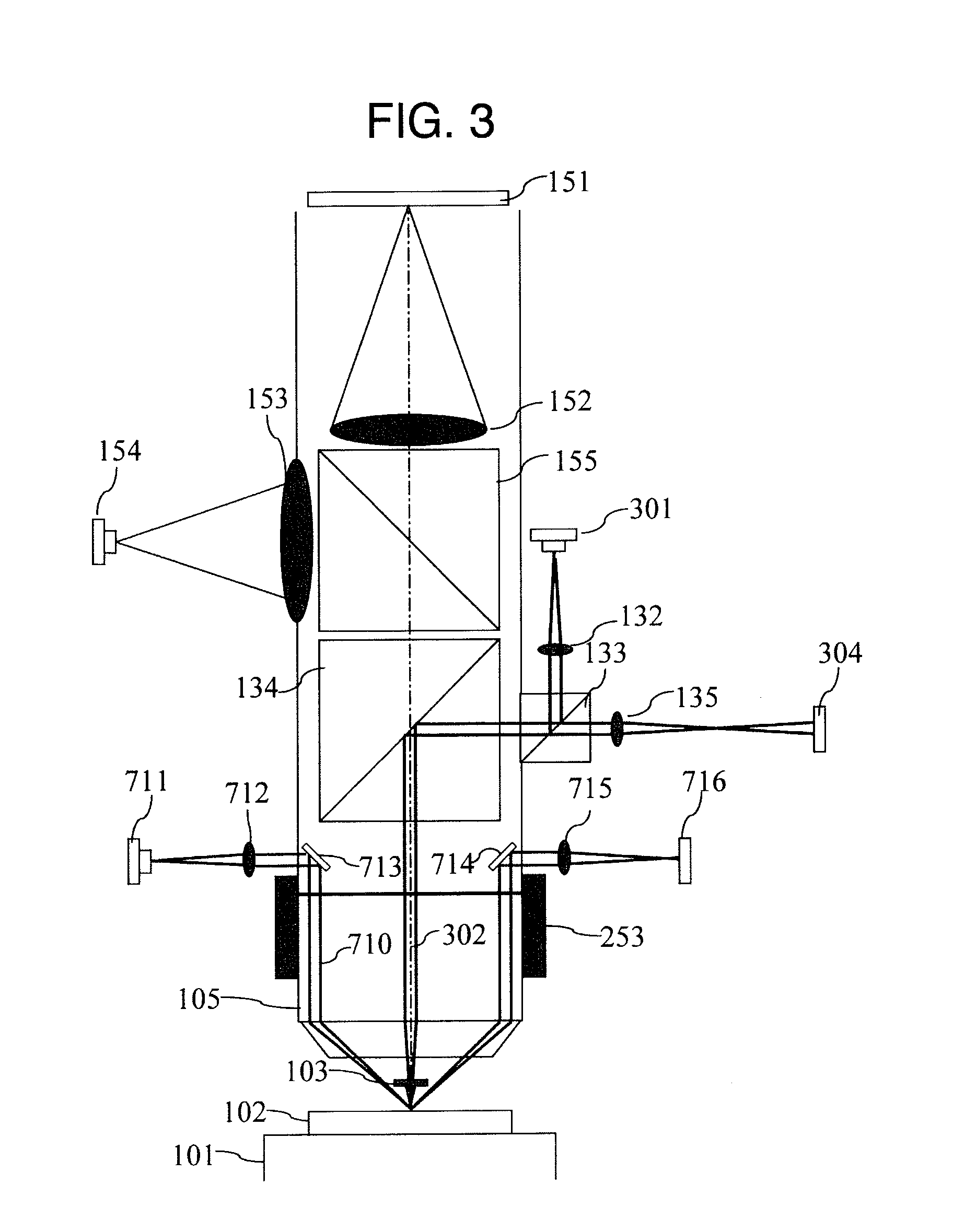Scanning Microscope With Shape Correction Means
a scanning microscope and shape correction technology, applied in the direction of mechanical roughness/irregularity measurement, instruments, semiconductor/solid-state device testing/measurement, etc., can solve the problems of inability difficult to increase the speed of physically scanning the sample, etc., to achieve high-speed measurement and high-precision measurement
- Summary
- Abstract
- Description
- Claims
- Application Information
AI Technical Summary
Benefits of technology
Problems solved by technology
Method used
Image
Examples
Embodiment Construction
[0072] Hereinafter, the invention will be explained by using the drawings.
[0073]FIG. 1 is a view showing a construction of a scanning probe microscope according to the invention. FIG. 2 is an enlarged view of a portion around a probe in an embodiment. A sample 102 is put on a sample stage 101 that can be driven in X, Y and Z directions. The sample stage is controlled by a scanning control portion 109. A probe 103 exists above the scan control portion 109. A probe moving mechanism 116 to which the probe 103 is fitted is driven by control from a probe driving portion 110 in the X, Y and Z directions and conducts probe scanning of the scanning probe microscope.
[0074] The probe moving mechanism 116 is fitted to a probe holder 105. The probe holder 105 is fitted to a barrel 299 by a probe holder up / down mechanism 253 and is roughly driven and moved in the Z direction under control from a probe holder driving portion 203. A probe moving mechanism 116 is a fine movement mechanism and doe...
PUM
 Login to View More
Login to View More Abstract
Description
Claims
Application Information
 Login to View More
Login to View More - R&D
- Intellectual Property
- Life Sciences
- Materials
- Tech Scout
- Unparalleled Data Quality
- Higher Quality Content
- 60% Fewer Hallucinations
Browse by: Latest US Patents, China's latest patents, Technical Efficacy Thesaurus, Application Domain, Technology Topic, Popular Technical Reports.
© 2025 PatSnap. All rights reserved.Legal|Privacy policy|Modern Slavery Act Transparency Statement|Sitemap|About US| Contact US: help@patsnap.com



